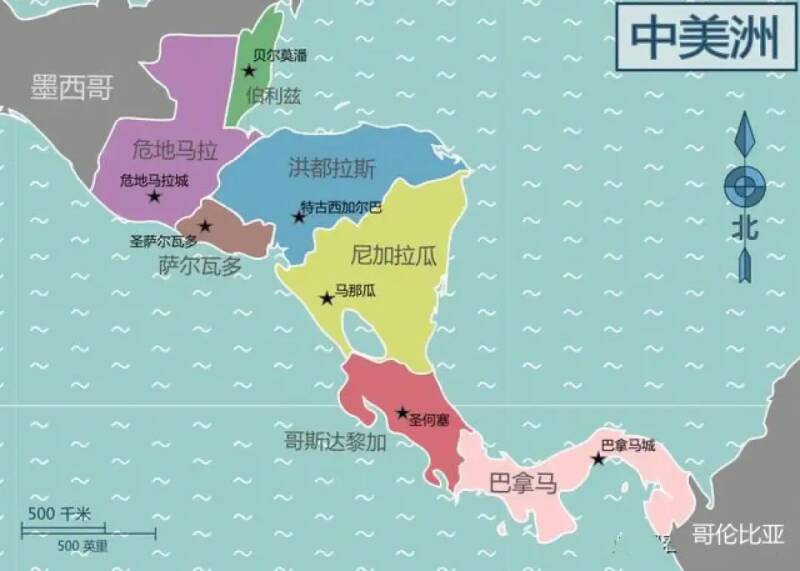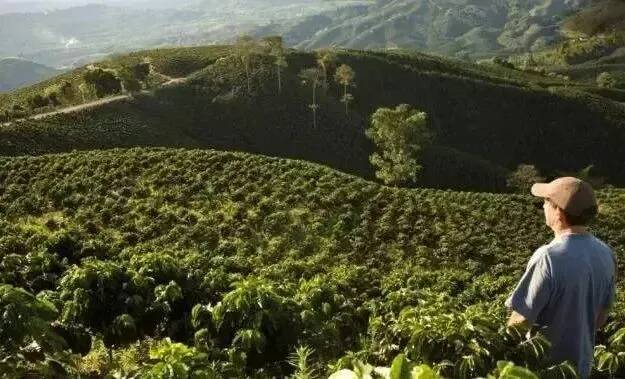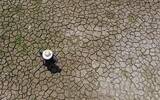Introduction to Brunka, the coffee producing area of Costa Rica in Central America
Central America refers to the central American continent south of the United States and north of Colombia, where the topography is mainly plateaus, mountains and forests, and has a volcanic belt more than 1300 kilometers long, so there is an accumulation of volcanic ash, fertile soil and developed agriculture. mainly to grow bananas, coffee and corn and other agricultural products. As a result, seven of the eight countries in Central America produce coffee, including many world-renowned coffee producers, such as Costa Rica, Honduras, Panama and so on.

Costa Rica was the first country to start growing coffee, which was first introduced and cultivated in the late 18th century because of its commercial value. Moreover, after becoming independent from Spain, the new government vigorously promoted coffee cultivation, distributed seeds to farmers free of charge, and implemented a tax-free policy, so many people joined in growing coffee.
After that, the country's coffee was sold to England and was praised as the "golden bean" by the British aristocracy, for which the British increased their investment in Costa Rica. The Anglo-Costa Rican Bank of Costa Rica also came into being in 1863 to subsidize farmers to develop land, cultivate arable land and set up treatment plants to promote the development of Costa Rican coffee industry.

Costa Rica is mostly mountainous and plateau topography, the Cordillera Mountains run through the central part of the country, and there are volcanoes, rich and diverse biological species and vast forests. The climate of Costa Rica is mainly tropical rain forest climate and savanna climate, with the annual rainy season from April to December and the dry season from December to April of the following year. It can be said that Costa Rica has natural conditions and climatic environment that are very suitable for coffee cultivation.
There are seven coffee producing areas in Costa Rica, namely: the Western Valley (Valley Central Occidental), the Central Valley (Valley Central), the Tarazu (Tarrazu), the Sanshui River (Tres Rios), Orosi (Orosi), Brunca (Bronka) and Turrialba (Duli Alba). Almost all of these areas are distributed in the central mountains.
Among them, Tarrazu is the largest and most famous coffee producing area in the country, while Brunca is relatively common in coffee flavor, mainly growing commercial beans, but in recent years began to pay attention to and improve the quality of coffee.
Brunca, located in the south of Costa Rica, has a diverse micro-climate due to the topography and mountains connecting Panama. The climate here is hot and humid, with an annual average temperature of about 24 °C. In the recent Costa Rican COE competition, La Torre Manor from the Brenka region won the second place in the sun-honey treatment group with a score of 92.
La Torre Manor is owned by Coraz ó n de Jes ú s, which was founded by Alvarado Fonseca and his family, who began growing coffee in 2012, founded the company in 2015 and bought La Torre Manor in 2017.
La Torre Manor, a small experimental farm of only 2 hectares, was one of the first Costa Rican farms to grow rose summer varieties in the Brenka region, and one of the highest elevations in the region, up to 1950 meters above sea level. The company attaches great importance to the protection of the surrounding environment and has been seeking to improve quality by creating innovative processing techniques and planting new varieties. Participated in the COE competition for the first time in 2021, won the fifth place at that time, and proved that high-quality coffee can also be grown in the region, and won second place this year.
Important Notice :
前街咖啡 FrontStreet Coffee has moved to new addredd:
FrontStreet Coffee Address: 315,Donghua East Road,GuangZhou
Tel:020 38364473
- Prev

Brazil releases report: More than 1000 cities have severe drought!
A report released by the Brazilian government on July 24 local time showed that Brazil is currently facing severe drought, and more than 1000 cities across the country are in a state of special or severe drought. In addition, the report stated that due to the drought, fires occur frequently across Brazil, and the number of fires currently occurring has reached a record high.
- Next

Clang! Clang! Ruixing destroyed a large number of raw materials for products that will be sold in the market!
▲ Click to pay attention| Daily Boutique Coffee Culture Magazine Coffee Factory For chain stores, if the raw materials used to make drinks have quality problems or expire, it is not uncommon for them to destroy them in large quantities. Previously, Ruixing had destroyed a large number of raw materials, which attracted the attention of netizens. Recently, Ruixing employees posted that their door
Related
- Being chased out of the rain in front of Starbucks?! Store: Sheltering from rain under umbrellas poses a safety hazard
- The white moonlight has changed?! Lucky launches "Big Winter Pear American"
- Hand-brewed coffee three-stage method, high-sweet and universal brewing method to share! What does the high sweet water level of hand-brewed coffee mean?
- What is the difference between raw, refined and full espresso coffee? How to extract espresso and taste good?
- A complete list of coffee bean names and their meanings! What is Yejia Shefi coffee? Where is Mantelin coffee?
- What grade does Arida Manor Kaduai coffee beans belong to? What treatment is Arida ASD slow anaerobic sun exposure?
- The milk tea cup becomes smaller?! Overlord Tea Girl launches a new "Return to Yunnan" series
- Accused of selling counterfeit and high-priced coffee beans! Well-known boutique coffee brand "Oukelao" bowed and apologized!
- How to make espresso dumplings? Can I eat coffee and glutinous rice balls together?
- Save the unformed and stagnant powder cakes in one second! What is the problem with stagnant water in the powder bowl of the espresso machine?

